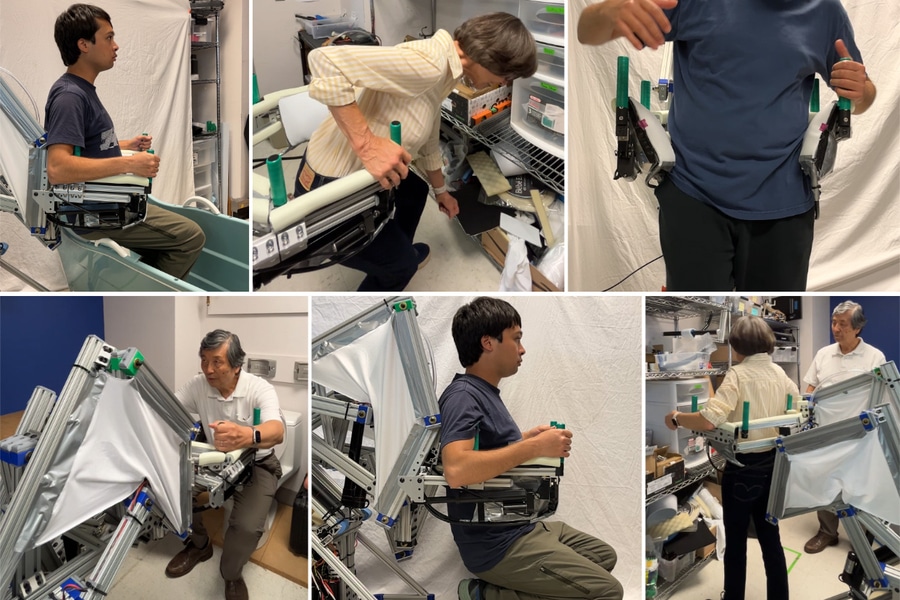A new robotic assistant designed at MIT could help elderly individuals live independently by providing physical support, assisting with standing and sitting, and even catching them if they fall.

As the U.S. population ages—with those over 65 projected to reach 82 million by 2050—caregiver shortages and rising healthcare costs make eldercare a growing crisis. To help address this, engineers at MIT have developed the Elderly Bodily Assistance Robot (E-BAR), a robotic mobility assistant designed to support older adults aging in place.
Robotic Support with a Human Touch
E-BAR acts like a set of smart handlebars, following the user and offering full-body support. It can help a person move from sitting to standing and vice versa, and, crucially, it’s equipped with airbag-equipped arms that deploy to catch someone mid-fall—without requiring uncomfortable harnesses or wearables.
The robot is engineered with omnidirectional wheels for maneuvering tight home spaces. A 220-pound base ensures stability, and its articulated arm structure can assist with complex tasks—like reaching or stepping over obstacles—while adapting to users’ balance needs.
“Our goal is to offer unobtrusive assistance whenever and wherever it’s needed,” says Harry Asada, the Ford Professor of Engineering at MIT. “Many elderly people avoid using bulky aids. E-BAR is designed to encourage movement and independence.”
Future of Aging
The team tested E-BAR with an elderly volunteer, proving it can support tasks like bending, reaching, and even stepping out of a tub. Though currently remote-controlled, future versions will be autonomous and possibly integrated with AI for fall prediction. Graduate student Roberto Bolli, E-BAR’s lead designer, sees this as just the beginning. “Eldercare is the next frontier for robotics,” he says. “We want to empower people to age with dignity in their own homes.”







